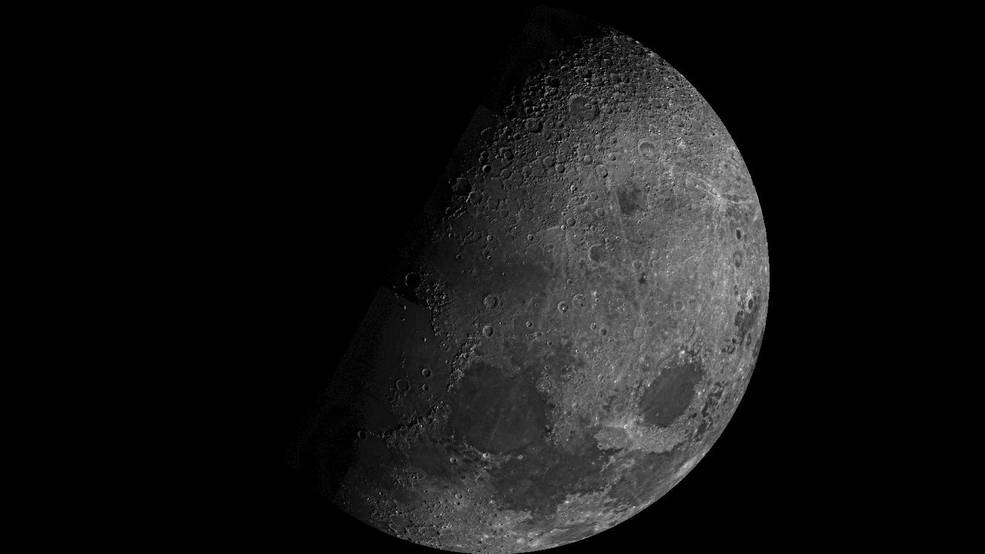US’ space agency National Aeronautics and Space Administration (NASA) on Sunday confirmed that the moon is rusting along the poles based on an image sent by India’s first lunar mission Chandrayaan-1. The discovery has left astronomers puzzled as moon is airless and hematite the rust found on its surface, normally requires oxygen and water.
A new paper in the journal Science Advances reviewed data from the Indian Space Research Organisation’s Chandrayaan-1 orbiter to come to this conclusion. The Orbiter had discovered water ice and mapped out a variety of minerals while surveying the moon’s surface in 2008.
ALSO READ | Indian astronomers discover one of the farthest star galaxies in universe
Taking interest in this, the lead author Shuai Li of the University of Hawaii studied the water, extensively in data from Chandrayaan-1’s Moon Mineralogy Mapper instrument, or M3, The mapper instrument was built by NASA’s Jet Propulsion Laboratory in Southern California.
“Water interacts with the rock to produce a diversity of minerals, and M3 detected spectra – or light reflected off surfaces – that revealed the Moon’s poles had a very different composition than the rest of it,” NASA said in a statement.
ALSO READ | ‘Sad, lonely and cold’: Scientist calculates the end of the universe
On close inspection of this spectra, Li found its composition is similar to that of hematite. “It’s very puzzling,” Li said. “The moon is a terrible environment for hematite to form in.”
He soon turned to NASA scientists Abigail Fraeman and Vivian Sun to confirm his discovery of hematite.
“At first, I totally didn’t believe it. It shouldn’t exist based on the conditions present on the Moon. But since we discovered water on the Moon, people have been speculating that there could be a greater variety of minerals than we realize if that water had reacted with rocks,” Fraeman said.
ALSO READ | The dent in Earth’s magnetic field is growing, confirms NASA
As of now, NASA has come to the conclusion that Earth is to blame for the rust. Earth’s oxygen could be driving the formation of hematite, according to the researchers. This terrestrial oxygen travels to the moon along an elongated extension of the earth’s magnetic field called a “magnetotail.”
However, they suggest further research can only reveal the exact reason behind the phenomenon.
“I think these results indicate that there are more complex chemical processes happening in our solar system than have been previously recognized,” Sun said. “We can understand them better by sending future missions to the Moon to test these hypotheses.”







